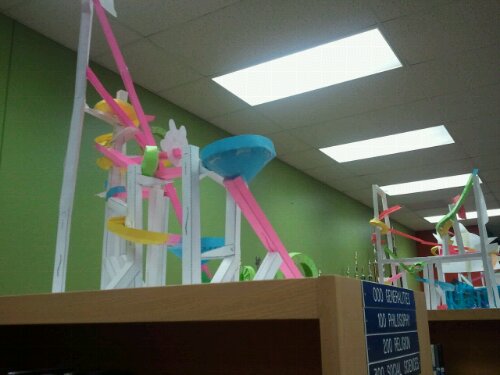I was asked this question (actually, a more tame version…I don’t think the person asking used the word ‘die’) and the short answer is, “No.”
I’ve been asked this question a couple of times. It first came up when AIM and ICQ chat clients were starting to become popular (does anyone still use ICQ anymore?) and people started abbreviating common words and/or could care less about spelling errors. Even then there was a distinction between everyday language use and a lexicon for the workplace.
But as companies are moving towards incorporating more social media into their marketing (do I need to be a friend of Rubio’s Baja Grill on Facebook? How much breaking news can they have?) we’re going to see some lines between the workplace and the socialspace blur (and I’m the first to admit that I fight that blur). This is part of why I have a work e-mail and a school e-mail. I sound much stuffier (more stuffy…what’s the grammar rule for that?) when I’m sending an e-mail to the staff about AIMS testing.
Why am I stuffier? I need it to be cut and dry, simple to understand. I need to write with clarity. Our students’ scores may rest on a teacher having the proper instructions so tests don’t become invalidated. I don’t want any room for interpretation.
As businesses use technology more and more, the written word doesn’t disappear – but it does take on new forms. I love that traditional newspapers have been scrambling to keep up with Twitter on breaking news stories. 140 characters can sometimes scoop paragraphs worth of info that will never get read.
I do make a distinction between paper use and the written word. I think that the Kindle and nook are signs of that. We’ll see what the iSlate/iPad/Macbook Touch has to say.
This past week students took their creative short stories and used GarageBand to turn them into an audio book complete with sound effects and a musical score. I tell the students (and the teachers creating the assignment) that if they want a quality product at the end the students need to write a rough draft of their recording first. Until we become experts at improv as a society, rough drafts will continue to be made to help ideas flow from one to the next.
Instead of typing a final copy of their story, they mixed down the audio files and dropped them into a shared folder on the school network. Students then donned their headphones and wrote reviews of the different audio books. It was a very enjoyable day in the library. Students had instant feedback, something that they appreciate. It was a project with a purpose. The clearer their ideas, the better the feedback. As the reviewing circle expands into students who they don’t know, the need for clarity increases. Inside jokes are now just random blurtings. This translates into the business world as project teams start to involve more and more collaboration, especially as international business increases.
A colleague of mine who teaches in another district is having trouble with the fact that her curriculum involved a lot of writing but not that much reading. Students must be able to ask, “Why are we writing this?” Is the teacher the only audience? The teacher will only be there for a year. High school (usually) is only four years. What about the rest of our lives? If no one’s reading your work, why write it? (Of course there is an enjoyment for some in the very act of writing, but the question of relevance does need to be asked when creating writing assignments.)




